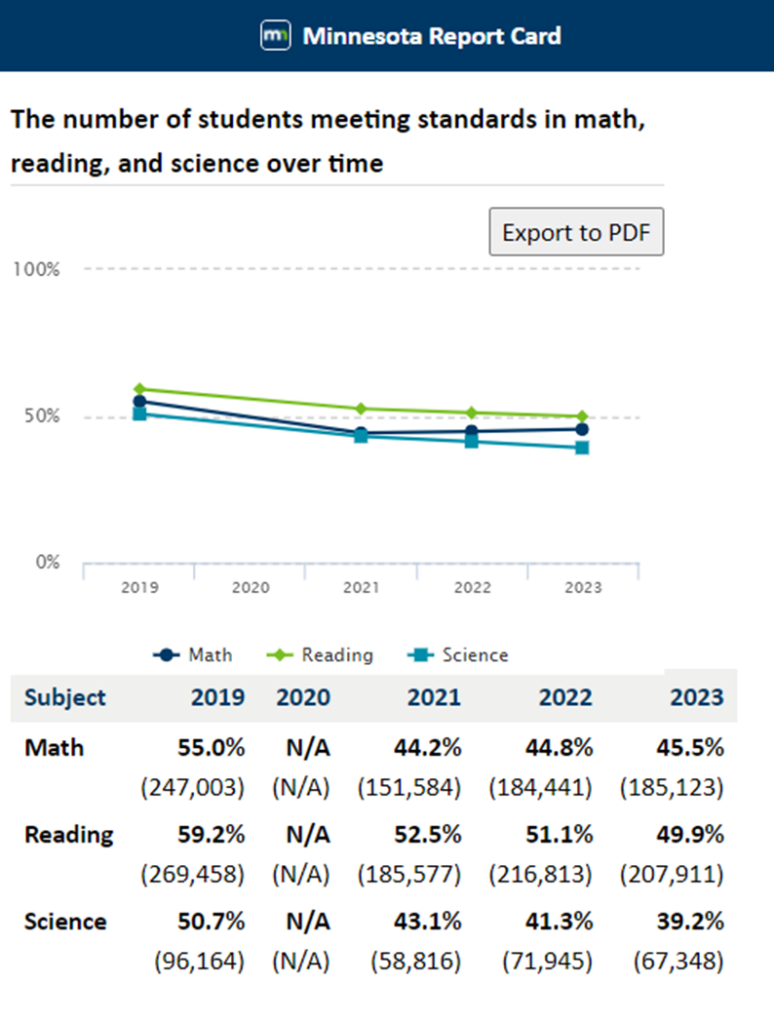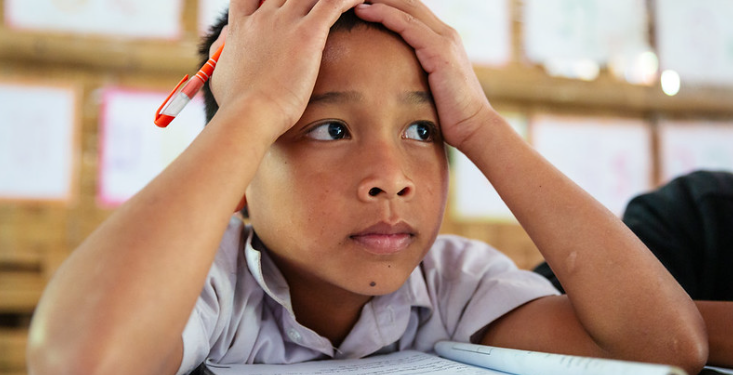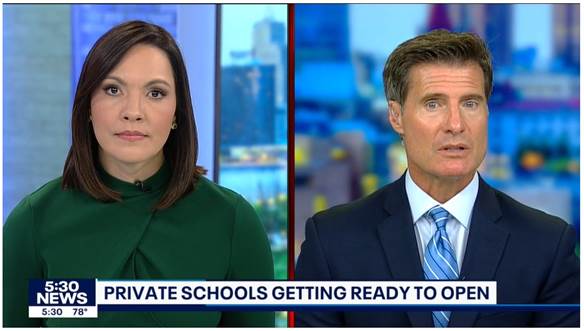The Minnesota Legislature is currently considering a bill that would make it far easier for school districts to implement a four-day school week.
On its surface, saying no to such a bill seems like a reasonable response. After all, according to the Minnesota Department of Education, only 50% of the state’s students are proficient in reading, only 46% are proficient in math, and only 39% are proficient in science. With scores like these, why would we want to have students spend less time in class?

On the other hand, there may be some hidden perks to such a law. “Under the four-day structure, students would still have to spend the same minimum number of hours in class,” Fox 9 News reports. “School administrators who previously adopted the structure say it’s saved them a lot of money, helped with teacher recruitment and retention, and hasn’t hurt test scores or graduation rates.”
But there’s another side of this issue to consider, namely, that the traditional public school classroom wastes much of a student’s valuable learning time. Amber de la Motte, the mother of a homeschooling family of musicians confirmed this in an interview with The Epoch Times last year:
‘What’s amazing to me is how the kids are able to fit [within] three hours what kids in public school fit in a five-to-six-hour day,’ Amber said, recounting her own experience with a lot of downtime in public school. ‘I’d have a literature class in high school. We never talked about the book!’ she said. By homeschooling their children, Marc and Amber ‘make sure their time counts.’
Recent research confirms de la Motte’s personal observations, as the following passage from Dr. Steven Duvall, the Director of Research at the Home School Legal Defense Association shows:
[T]wo studies comparing the effectiveness of homeschool and public-school instruction across a variety of grades and demographics found that the same learning behaviors occurred between 2 and 2.5 times as often in homeschools as they did in public-school classrooms. Because the homeschool students demonstrated significantly more learning behavior during instruction, it was unsurprising that they made more academic gains than the public-school students. [Emphasis added.]
Put differently, public school students only receive about 16 minutes of instruction for every hour they spend in class. That means that homeschool students can cover the same educational ground as their public school peers get in a day with only about two to three hours of instruction.
Such news should give us hope, for it suggests that perhaps the poor performance we see in today’s schools isn’t necessarily the result of dumb students or incapable teachers; instead, our problem is with the system itself.
Former public school teacher John Taylor Gatto recognized this fact, writing the following in his book, Dumbing Us Down:
Although teachers do care and do work very, very hard, the institution is psychopathic-it has no conscience. It rings a bell and the young man in the middle of writing a poem must close his notebook and move to a different cell where he must memorize that humans and monkeys derive from a common ancestor [Emphasis added.]
So would it be a good idea for Minnesota Legislators to pass a law making it easier for school districts to enact a four-day school week? Perhaps, but it would likely be even more beneficial if they enabled students to choose other educational avenues beyond the “psychopathic institutions” that are our public schools.
How would that help, you ask? Because educational choice lets education dollars follow the student rather than automatically going to an institution. This frees parents to make the best educational decisions for their students, whether sending them to public school, private school, charter, or otherwise. It also encourages educational innovation—such as microschools—which break both students and teachers free from massive educational institutions and the administrative burdens and constraining regulations which come with them.
Yes, going to a four-day school week may have some educational benefits. But there would likely be far more benefits if Minnesota Legislators put educational choice in the hands of parents to let them decide the educational environment in which their children will thrive best.
—
Image Credit: Flickr-Global Partnership for Education, CC BY-NC-ND 2.0













